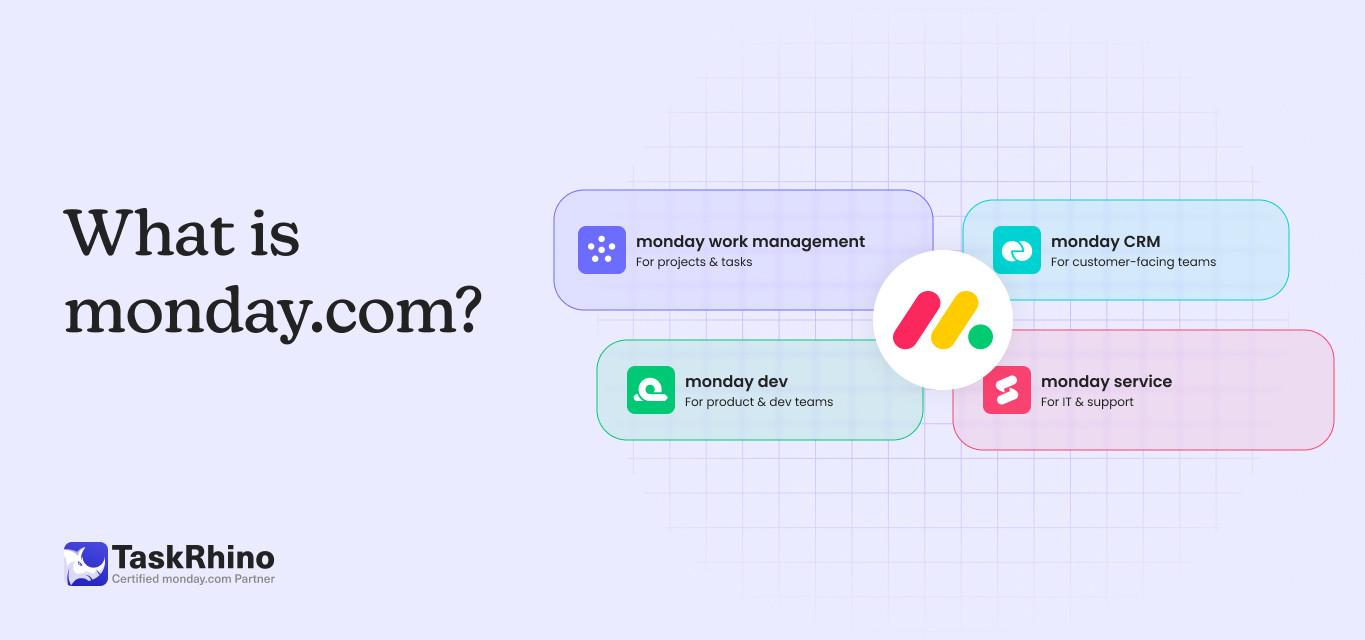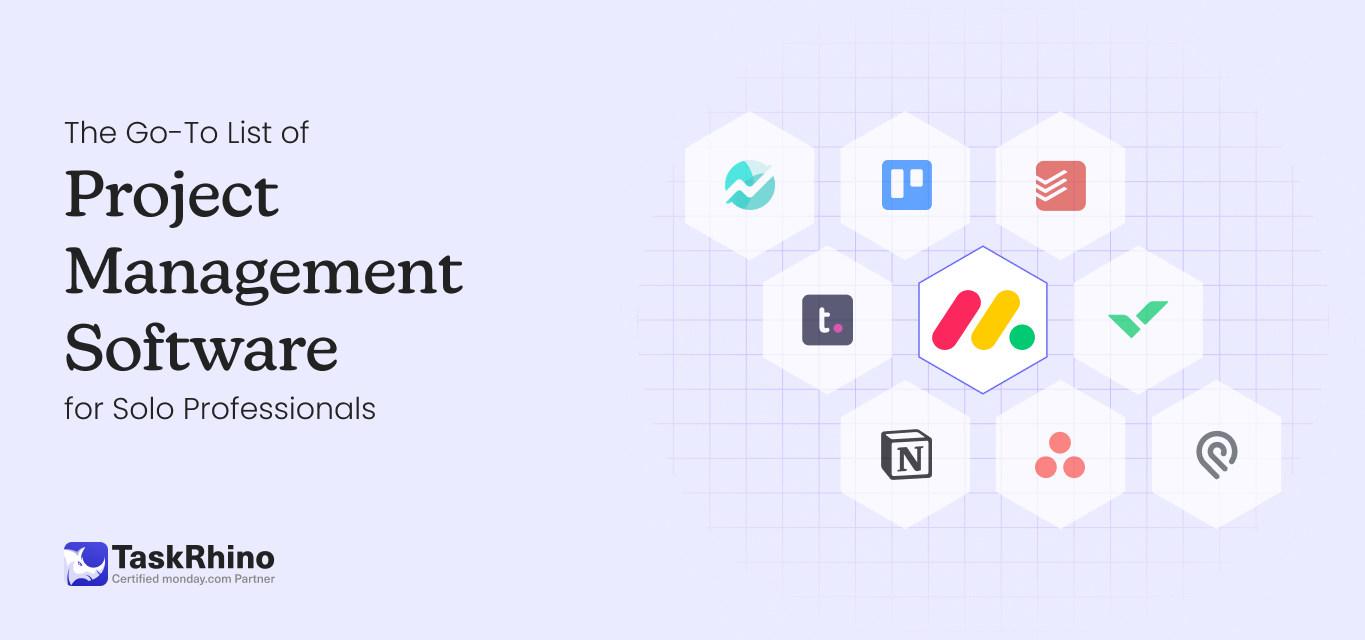
Step-by-Step Guide: Migrate from Bonterra to monday.com
With Bonterra transitioning due to its acquisition of Athena Software, non-profits must swiftly migrate to a robust platform like Monday.com. This migration is not just a task but a comprehensive project requiring detailed planning, obtaining approvals, securing budgeting, and getting proposals—all of which can take several months.
Why Act Now?
Why Act Now? Delaying the migration process could disrupt your operations and affect your mission-critical activities. Starting now gives you ample time to manage the intricacies of the migration process without rushing.
At TaskRhino, we deeply understand the specific needs and challenges of non-profits. Our extensive experience in assisting organizations across various sectors—including social welfare, education, environmental protection, arts & culture, disaster relief, animal welfare, food security, community engagement, health, youth development, human rights, and COVID-19 response—positions us as your ideal partner for migrating from Bonterra to monday.com.
Key Reasons to Migrate from Bonterra to monday.com
- Enhanced Collaboration: Foster better teamwork and donor communication with integrated tools that keep everyone on the same page.
- Streamlined Processes: Automate routine tasks and create customized workflows that align with your specific needs, such as donor management, task scheduling, and grant application tracking.
- Improved Reporting: Utilize advanced reporting tools to gain insights and track your impact.
- Flexibility and Customization: Tailor the platform to fit your unique needs, from managing volunteers to tracking donations and running complex projects.
Ready to make your switch? Our Experts will help you start planning your migration TODAY! Book an appointment
4 Simple Steps to Migrate From Bonterra to Monday.com
Starting your migration process now ensures you won’t face interruptions. Below, we’ll walk you through the detailed steps needed to successfully migrate from Bonterra to monday.com, ensuring your non-profit continues to operate smoothly and efficiently.
Step 1: Planning Your Migration

Assess Current Setup in Bonterra
Migrating from Bonterra to monday.com requires a strategic and detailed approach to ensure a seamless transition. Start by thoroughly assessing your setup in the Bonterra-guided fundraising tool to understand what needs to be migrated and how it will fit into monday.com’s framework.
- Conduct a Thorough Inventory of Your Data, Projects, and Workflows in Bonterra
- Data Inventory: Catalog all your existing data, including donor information, volunteer records, project details, and financial data. This will ensure a comprehensive understanding of the scope of your migration.
- Project Inventory: Document all ongoing and past projects. Identify the structure, milestones, tasks, and dependencies within each project.
- Workflow Analysis: Review the workflows you currently use in Bonterra, focusing on critical processes such as grant application tracking, donor communication, and volunteer coordination.
2. Identify Critical Data and Processes Essential for Your Non-Profit Operations
- Prioritize data and processes crucial for your daily operations and long-term goals.
- Determine which data sets need to be migrated, which can be archived, and what new workflows might benefit monday.com.
Comparative Matrix: Bonterra vs. Monday.com
| Category | Feature | Bonterra | monday.com |
| Commercial | Pricing | Typically, it is higher and less flexible. | Non-profits receive a 70% discount on all plans. Pricing tiers accommodate various organizational sizes and budgets. |
| Scalability | Limited scalability can be cumbersome for growing organizations. | Highly scalable; easily adapts to growing non-profits with increasing data and project management needs. | |
| Features | Volunteer Management | Basic volunteer tracking features. | Advanced volunteer management tools with customizable boards, timelines, and reporting capabilities. More details here. |
| Donor Management Tools | Standard donor management and limited customization options. | Robust CRM donor management features include automation, segmentation, fundraising solutions, and detailed reporting. More details here. | |
| Project Management | Basic project tracking capabilities. | Comprehensive project management tools, including Gantt charts, timelines, task dependencies, and automation. More details here. | |
| Grant Management | Limited grant tracking functionalities. | Customizable workflows for grant application tracking, fund allocation, and reporting. | |
| Event Planning | Basic event management tools, including event ticketing. | Advanced event planning features, including task assignments, event ticketing, timelines, and real time collaboration. | |
| Security | Data Security | Standard security protocols. | Enterprise-grade security features, including data encryption, two-factor authentication, and compliance with GDPR and HIPAA. More details here. |
| User Permissions | Limited role-based access. | Granular user permissions and role-based access control to ensure data security and compliance. More details here. | |
| Collaboration Tools | Communication | Basic communication features. | Integrated communication tools, including comments, mentions, and real-time updates within tasks and projects. |
| File Sharing | Standard file-sharing capabilities. | Enhanced file sharing and storage solutions, integrated with Google Drive, Dropbox, and other cloud services. More details here. | |
| Integration | Third-Party Integrations | Limited integrations with other tools and platforms. | Extensive integration capabilities with popular tools like Slack, Zoom, Google Workspace, Mailchimp, and more. More details here. |
| Support | Customer Support | Standard support options. | Comprehensive support options, including 24/7 support, dedicated customer success managers for enterprise plans, and a rich knowledge base with tutorials and best practices. More details here. |
| Mobile Accessibility | Mobile App Functionality | Basic mobile access features. | Fully functional mobile app for iOS and Android, allowing full access to boards, projects, and communication tools on the go. More details here. |
Reasons Monday.com is the best choice for non-profits
- Efficiency: Automate routine tasks, freeing up your team to focus on mission-critical activities
- Visibility: Gain a clearer overview of your projects, donor relationships, and volunteer management
- Impact Tracking: Use advanced analytics to measure the impact of your programs and campaigns
- Flexibility: Adapt the platform to your evolving needs without significant additional costs or time
Need Assistance in Migrating From Bonterra to monday.com?
Step 2: Preparing for the Migration Process

Data Cleanup and Backup
Before initiating the data migration from Bonterra-guided fundraising to monday.com, cleaning up and back up your data is crucial to ensure a smooth and secure transition.
- Review and Clean Up Your Data in Bonterra
- Duplicate Records: Identify and remove duplicate records to ensure your data is accurate and streamlined.
- Outdated Information: Archive or delete outdated or irrelevant information, such as old donor records or inactive volunteer data.
- Data Validation: Verify that all necessary fields are correctly populated and consistent.
- Tools and Techniques:
- Use Bonterra’s built-in data management tools to identify duplicates and validate data.
- Consider using third-party data cleaning tools such as DataCleaner, Trifacta, or OpenRefine.
- Importance of Backing Up All Data Before Migration
- Full Data Backup: Perform a full backup of all your data to prevent data loss during migration.
- Backup Tools: Use reliable backup solutions, such as Bonterra’s export tools, or third-party backup services like Backupify or Spanning.
Solution: Use monday.com’s import and export tools to safeguard your data during the transition. For more details on how to use these tools, visit monday.com Import and Export Documentation.
Mapping Data from Bonterra to Monday.com
Mapping your data accurately ensures all critical information is correctly transferred and usable on monday.com.
- Detailed Guide on Mapping Data Fields
- Donor Information: Include donor communication preferences, names, contact details, and history.
- Volunteer Records: Ensure that volunteer names, availability, skills, and involvement history are accurately mapped.
- Project Data: Map project names, tasks, deadlines, milestones, and related documents.
- Common Pitfalls and How to Avoid Them:
- Field Incompatibility: Ensure that data fields in Bonterra have equivalent fields in monday.com. If necessary, customize fields in monday.com.
- Data Loss: Double-check all mappings to ensure no data is left behind or incorrectly mapped.
Example: Use the monday.com CSV Import feature to upload donor records. Ensure that each column in your CSV corresponds to a field in your monday.com board. Refer to this YouTube monday.com Import Guide Video for detailed steps.
Customizing Monday.com for Your Non-Profit Needs
Tailoring monday.com to your non-profit’s needs can greatly enhance operational efficiency and impact.
- Setting Up Custom Boards, Columns, and Workflows
- Grant Applications: Create a board to track grant applications, with columns for application status, deadlines, and assigned team members.
- Donor Relations: Set up a CRM board for donor relationship management, including columns for donor status, communication history, and next steps.
- Volunteer Scheduling: Design a board for volunteer management, including columns for volunteer availability, task scheduling, and hours logged.
Examples:
- Grant Application Board: Use the Kanban view to visually track each grant application’s progress. Include columns for “Application Drafted,” “Submitted,” “Under Review,” and “Approved.”
- Donor CRM Board: Implement automation to send follow-up emails to donors after a certain period. Customize the board with filters to easily segment donors based on donation frequency or amount.
- Volunteer Management Board: Use the calendar view to schedule and track volunteer shifts. Automate notifications to remind volunteers of their upcoming commitments. To get monday.com customization services to meet your specific non-profit requirements, we are just one click away.
Resource Planning and Timeline
Human Resources Required
| Role | Responsibilities | Estimated Time Commitment |
| Project Manager | Oversee data migration, coordinate tasks, and ensure deadlines are met. | Full-time for 3-6 months |
| Data Analyst | Data cleanup, validation, and mapping. | Part-time for 2-3 months |
| IT Specialist | Technical setup, troubleshooting, and support. | Part-time for 3-6 months |
| Non-Profit Specialist | Tailoring workflows to non-profit needs and training staff. | Part-time for 3-6 months |
| Trainer | Conduct staff training sessions and create documentation. | Part-time for 1-2 months |
Tools and Techniques
- Project Management: Use monday.com itself to manage the data migration project. Create a project board with tasks, deadlines, and assigned roles.
- Data Cleaning: Tools like DataCleaner, OpenRefine, or Trifacta for data cleaning and validation.
- Backup Solutions: Bonterra’s export tools, Backupify or Spanning, for data backup.
- Training: Conduct regular training sessions using monday.com’s Non-Profit Resource Center for tutorials and best practices.
By meticulously preparing and leveraging the right tools and expertise, your non-profit can ensure a smooth data migration from Bonterra to monday.com, setting the stage for enhanced efficiency and impact.
Step 3: Executing the Migration

Choosing the Right Migration Method
The right migration method is crucial when migrating data from Bonterra to monday.com. You can choose either a manual import method or data migration tools.
- Manual Import Methods
- Pros: Greater control over data, can manually review and clean data during the process.
- Cons: Time-consuming, higher risk of human error, requires more hands-on effort.
- Suitable For: Smaller datasets or when precise control is needed over the data migration process.
- Automated Migration Tools
- Pros: Faster, reduces manual effort, minimizes the risk of errors, and can handle large datasets efficiently.
- Cons: It requires initial setup and configuration, but we may need troubleshooting if issues arise.
- Suitable For: Large datasets, repetitive tasks, and when time efficiency is a priority.
Example: Using Zapier for Automated Data Transfer: Zapier can automate the data transfer between Bonterra and monday.com by creating “Zaps” that move information automatically based on triggers and actions. This method is particularly useful for ongoing data syncs and reducing manual workload.
Data Import Process
Importing data into monday.com involves steps to ensure a smooth transition. Here’s a step-by-step guide:
- Prepare Your Data
- Ensure your data is cleaned and properly formatted. Use CSV files as they are commonly supported for data import.
- Importing Data into monday.com
- Step 1: Navigate to the board where you want to import data.
- Step 2: Click the “Import” button in the top right corner.
- Step 3: Select the type of data source you are importing from (e.g., CSV, Excel).
- Step 4: Map your data fields from Bonterra to the corresponding columns on monday.com.
- Step 5: Review the import summary and start the import process.
- Visual Aid:
- Use the monday.com Import Guide video for a visual walkthrough of the import process.
- Utilize monday.com’s Support Resources
- Refer to monday.com’s Import and Export Documentation for detailed instructions and troubleshooting tips.
- Leverage TaskRhino’s expertise for personalized support and guidance throughout the migration process.
Validating the Migration
After importing your data, verifying that everything has been transferred correctly and is functioning as expected is essential.
- Steps to Verify Data Integrity
- Check Data Completeness: Ensure that all records have been imported without any loss of information.
- Validate Field Mappings: Verify that data fields in monday.com accurately reflect the data from Bonterra.
- Test Workflows: Test your workflows to ensure they operate correctly with the imported data.
- Best Practices for Ensuring Data Accuracy
- Spot Checks: Conduct random spot checks of different data sets to confirm accuracy.
- Stakeholder Review: Involve key stakeholders in reviewing the imported data and workflows.
- Automated Validation: Use tools within monday.com to cross-check data consistency and integrity.
Step 4: Post-Migration

Testing and Adjustments
After migrating your data to monday.com, it’s crucial to test the system thoroughly to ensure everything functions as expected.
- Conduct Pilot Tests
- Small Scale Testing: Conduct pilot tests with a small team or a specific department, such as the volunteer coordination team.
- Key Areas to Test: Focus on critical workflows like donor relationship management, volunteer scheduling, task scheduling, and grant application tracking.
- Gathering Feedback: Collect feedback from the team involved in the pilot. Use surveys, meetings, and direct feedback channels to gather insights.
Example: Test a new project tracking workflow with the events planning team. Monitor how effectively they can use the new system to plan an upcoming fundraiser, track tasks, event ticketing, and communicate with volunteers.
Training Your Team
Effective training and onboarding are essential to ensure your team can fully utilize monday.com’s capabilities.
- Importance of Training Sessions
- Initial Onboarding: Conduct comprehensive onboarding sessions for all staff members, focusing on their roles and use of monday.com.
- Ongoing Training: Regularly update training to introduce new features and best practices.
- Resources for Training
- monday.com Tutorials: Leverage available tutorials and guides from monday.com to help your team get acquainted with the platform. Explore the Non-Profit Resource Center for specific use cases and best practices.
- TaskRhino’s Training Services: Utilize our monday.com customized training services tailored to your organization’s needs. Our experts can provide hands-on training and ongoing support.
Continuous Improvement
Continuous improvement is vital to ensure your non-profit maximizes the benefits of monday.com.
- Collect Continuous Feedback
- Feedback Channels: Establish regular feedback mechanisms, such as surveys, suggestion boxes, or team meetings, to gather user insights.
- Iterative Improvements: Use the feedback to make iterative improvements to workflows and processes.
- Regular Review Meetings
- Scheduled Reviews: Hold quarterly review meetings to assess the efficiency of your project management processes and make necessary adjustments.
- Involve Key Stakeholders: To provide comprehensive feedback, include team leaders from various departments, such as fundraising solutions, volunteer management, and program delivery.
Example: Conduct a quarterly review with the program management team to evaluate the effectiveness of the grant management workflow. Assess metrics such as application success rates, review times, and team collaboration.
Use Case: Community Health Initiative
- Roles and Responsibilities
- Project Manager (Maria): This person oversees the data migration process, coordinates with all departments, and ensures deadlines are met.
- Data Analyst (John): Handles data cleanup, validation, and mapping from Bonterra to monday.com.
- Volunteer Coordinator (Sarah): Manages the volunteer scheduling board and provides feedback during the pilot testing phase.
- Fundraising Director (Liam): This person ensures donor management workflows are set up correctly and conducts training sessions for the fundraising team.
- IT Specialist (Ravi): Provides technical support and ensures the system functions correctly post-migration.
- Trainer (Emily): Conducts initial and ongoing training sessions for all staff members.
By following these post-migration steps and involving the right team members, your non-profit can effectively transition to using monday.com, ensuring improved efficiency, better collaboration, and enhanced impact measurement.
Conclusion
Migrating from Bonterra to monday.com offers numerous benefits that can significantly enhance the efficiency and impact of your non-profit organization. By adopting monday.com, you will experience:
- Enhanced Collaboration: Foster better teamwork and communication with integrated tools that keep everyone on the same page.
- Streamlined Workflows: Automate routine tasks and create customized workflows that align with your specific needs, such as donor management, volunteer scheduling, and grant application tracking.
- Improved Impact Measurement: Utilize advanced reporting and analytics to gain insights into your programs and track the success of your initiatives.
Continuous engagement and optimization are crucial post-migration. Gather feedback from your team regularly, conduct periodic reviews, and make iterative improvements to ensure your organization continues to benefit from monday.com’s powerful features.
By leveraging the expertise of TaskRhino and utilizing the robust capabilities of monday.com, your non-profit can achieve greater efficiency, better collaboration, and more impactful results. Don’t wait—start your migration process now and set your organization up for future success. Connect with our monday.com experts today and get the best solution for your non-profit organization.
Get More Done with Less Effort
Our experts help you maximize productivity and streamline workflows with ease.
Editor's Choice

How Much Does monday.com Cost? A Complete Breakdown of Plans

What is monday.com? How Can It Be Your Team’s Greatest Asset?

The Ultimate List of Project Management Software for Individual Users
